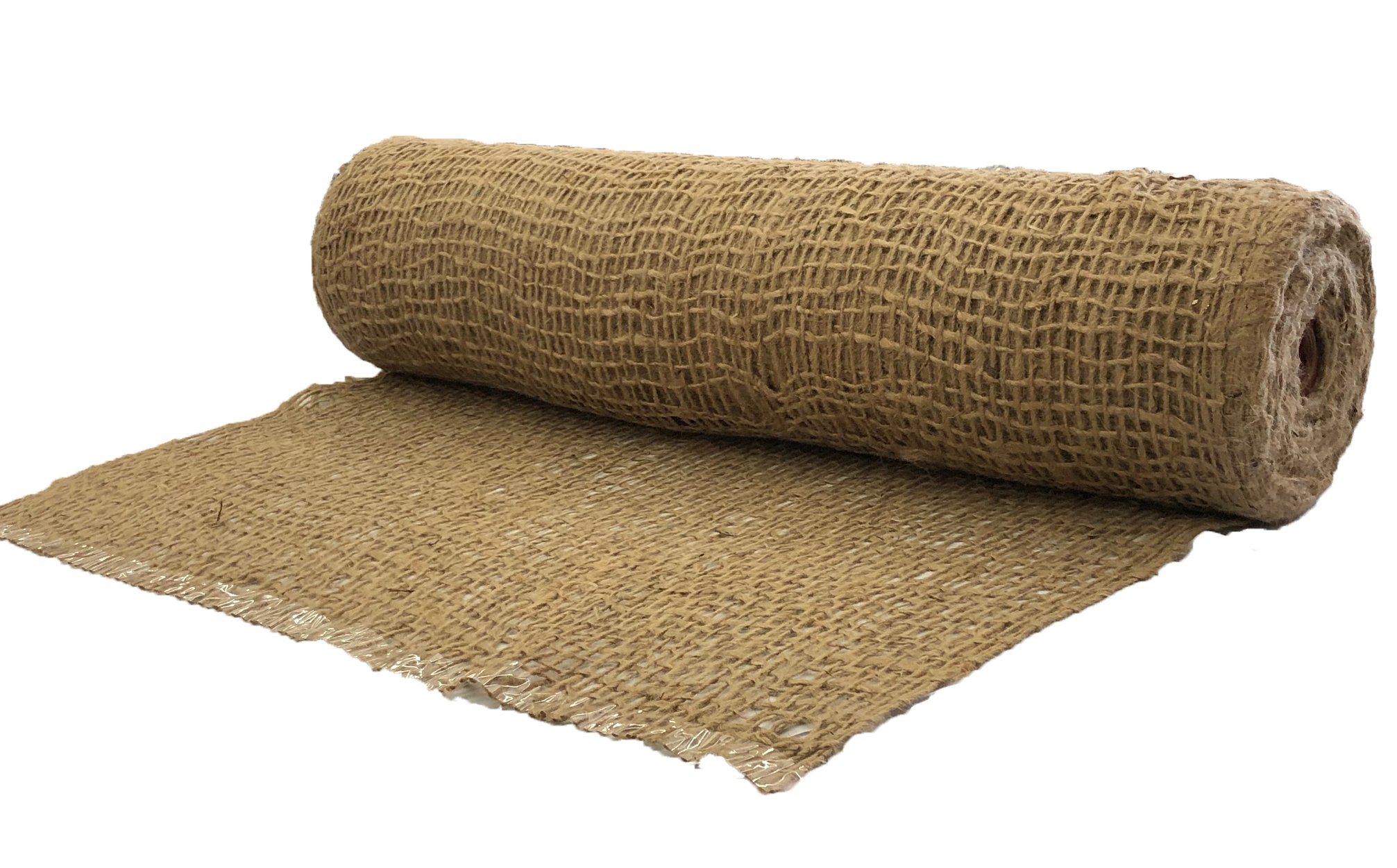- March 21, 2024
- Posted by: wellcoindustries
- Categories: Burlap, Erosion Control
Erosion control is a critical aspect of environmental conservation and construction projects. It involves implementing strategies and materials to prevent soil erosion caused by wind, water, and human activity. Among the myriad of options available, burlap and synthetic cloths stand out as popular choices for erosion control. This article delves into the advantages and disadvantages of both materials, providing insights to help you make an informed decision on the best erosion control cloth for your needs.

Introduction to Erosion Control
Erosion is a natural process that wears away soil and rock from the Earth’s surface. While it plays a crucial role in shaping landscapes, excessive erosion can have detrimental effects on the environment and human activities. It can lead to loss of fertile topsoil, increased pollution in waterways, and damage to infrastructure. The significance of erosion control cannot be overstated—it is essential for preserving natural habitats, maintaining agricultural productivity, and protecting built environments.
Burlap: The Natural Choice
Properties of Burlap
Burlap, also known as jute, is a natural fiber made from the jute plant. It is biodegradable, sustainable, and has a rough texture, making it an effective material for erosion control. Burlap allows water and air to penetrate, promoting healthy soil conditions while preventing soil erosion.
Advantages of Burlap in Erosion Control
Burlap is favored for its environmental benefits and effectiveness in various applications. Its natural fibers degrade over time, enriching the soil without leaving harmful residues. Burlap is particularly suitable for areas requiring temporary erosion control, such as construction sites and newly landscaped areas.
Disadvantages of Using Burlap
While burlap is beneficial in many ways, it has its drawbacks. Its biodegradable nature means it is not suitable for long-term erosion control projects. Additionally, burlap can be susceptible to rot and mold in wet conditions, requiring careful monitoring and maintenance.
Synthetic Erosion Control Cloths
Understanding Synthetic Materials
Synthetic erosion control cloths are made from man-made materials such as polypropylene and polyester. These materials are designed for durability and strength, offering a long-lasting solution to erosion control.
Advantages of Synthetic Erosion Control Cloths
The primary benefit of synthetic cloths is their longevity. They can withstand harsh environmental conditions, making them ideal for areas exposed to prolonged erosion pressures. Synthetic materials also offer flexibility in design, allowing for customization to fit specific project needs.
Disadvantages of Synthetic Materials
The environmental impact of synthetic erosion control materials is a significant concern. They are not biodegradable, potentially leading to pollution if not properly managed. Additionally, the production of synthetic cloths involves the use of fossil fuels and chemicals, contributing to their environmental footprint.
Comparative Analysis
Burlap vs. Synthetic: Performance Comparison
When comparing burlap and synthetic cloths, it is essential to consider factors such as durability, environmental impact, and cost. Burlap offers a short-term, eco-friendly solution, whereas synthetic cloths provide long-term stability but at a greater environmental cost.
Cost-Effectiveness Analysis
The cost of erosion control materials can vary widely. Burlap is generally more affordable upfront but may require more frequent replacement. Synthetic cloths, while more expensive initially, offer longer-term cost savings due to their durability.
Environmental Considerations
The choice between burlap and synthetic materials also hinges on environmental considerations. Burlap’s biodegradability makes it a more sustainable choice, while the durability of synthetic cloths can mitigate erosion more effectively in certain scenarios.
Best Practices in Erosion Control
Selection Criteria for Erosion Control Materials
Choosing the right erosion control material involves assessing the specific needs of your project, including the expected duration, environmental conditions, and budget. It’s also important to consider the ecological impact of the materials used.
Installation Tips for Erosion Control Cloths
Proper installation is key to the effectiveness of erosion control cloths. Ensure that the material is securely anchored and covers the entire area at risk of erosion. Regular inspection and maintenance are also crucial to address any issues promptly.
Burlap vs. Synthetic: Choosing the Best Erosion Control Cloth
In conclusion, both burlap and synthetic erosion control cloths have their advantages and limitations. The choice between them depends on the specific requirements of your project, including the duration of protection needed, environmental considerations, and budget constraints. By weighing these factors carefully, you can select the best erosion control cloth for your needs, ensuring the protection of soil and the environment.
Conclusion
Choosing between burlap and synthetic erosion control cloths requires a careful evaluation of your project’s needs, environmental considerations, and budget. Burlap offers an eco-friendly, cost-effective solution for short-term projects, while synthetic cloths provide durability and strength for longer-term applications. Regardless of the material chosen, implementing proper erosion control practices is essential for protecting the soil and preserving the environment for future generations.
